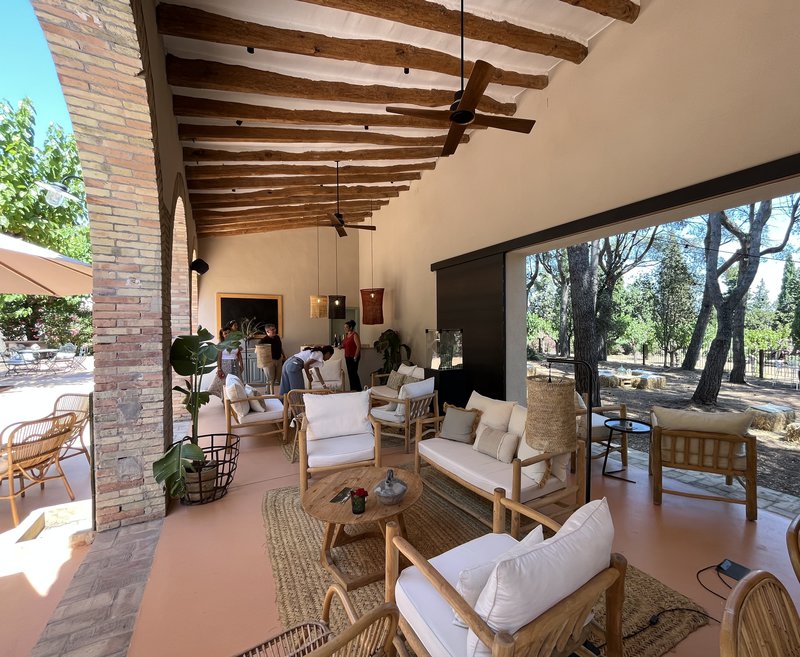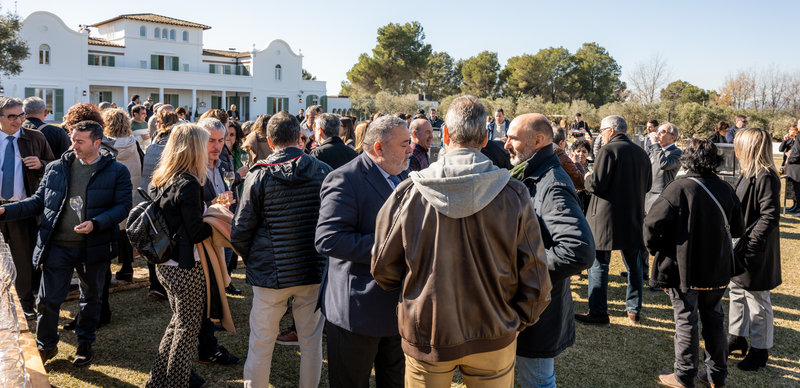Wine tourism, one of the country’s main assets
The authorities in Catalonia have begun ramping up their efforts to turn the country’s food and wine into one of its most important tourist attractions
Since the pandemic, companies have incorporated wine bars and experiences in open-air spaces into their tourism packages
A few months ago, the Catalan tourism agency announced a determination – and 12 million euros of funding – to establish food and wine as one of Catalonia’s main tourist assets. Since then, the authorities, in conjunction with the Alícia Foundation, the Bullifoundation and the Catalan Academy of Gastronomy, have presented the country’s candidacy to become the European Region of Gastronomy in 2025, as well as launching a gastronomy promotion campaign that is currently underway in the United States, Central Europe and Scandinavia. The aim, according to the General Director of Tourism, Marta Domènech, is “to turn a real resource, such as food and wine, into a tourist product”.
Meanwhile, in wine-growing regions such as Penedès, individuals, companies and institutions have begun to show off the results of the work to develop the wine tourism sector of recent years, such as new itineraries, signage and accommodation that have been added to the increased food and wine offerings in the region’s restaurants and wineries. Since the pandemic, companies have added wine bars and experiences in open-air spaces to their tourism packages, with many of these proposals gaining a new local audience that discovered Penedès due to the health restrictions.
“There are Catalans who had been to Tuscany but who didn’t know Penedès,” says Emília Torres, head of tourism for the Vilafranca del Penedès city council. The pandemic helped bring these visitors to Penedès, and many have returned and will continue to do so.
In the past couple of years, both the Vilafranca city council and the Tourism Penedès consortium have been working on a network of motorhome parking areas to help solve one of the region’s weak points: a lack of accommodation. There are now 12 areas, and the number is growing, with the aim of providing areas for visitors to spend the night close to local products and services, including food and wine, Ramon Riera, president of Tourism Penedès explains. Riera acknowledges that accommodation is a weakness but says he “takes a long view” and he points out that the hotels on the coast are also close enough to provide accommodation for wine tourists in Penedès.
Rural tourism
Riera adds that the number of rural guest houses has been growing in recent years. In fact, Raimon Olivella, president of Masies del Penedès, which represents rural guest houses in the area, insists that “the supply of places in rural guest houses has already surpassed pre-pandemic levels”.
An example is a new boutique hotel that recently opened next to the ancient Iberian archeological site of La Font de la Canya. The three-million-euro investment from the Cal Blay catering group has made it possible to turn an old stately home into an eight-room hotel that at the same time is designed to host events for large groups of young people, with space for 30 beds and outdoor showers.
It is hoped that this project will help put La Font de la Canya on the map and boost visits to the site while promoting tourism linked to the surrounding landscape and environment. According to Riera, the objective in Penedès has never been about volume but rather attracting quality tourism, and Tourism Penedès is focusing on the family and business sectors. “We’re interested in guaranteeing sustainable tourism that provides added value,” he says.
Tourism Penedès’ latest venture, with financial support from the Catalan government, was to organise the Ressons music festival with Cruïlla, which between April 28 and 30 will feature 33 concerts by Catalan and Spanish artists in 17 wineries, and heritage and natural sites in Alt Penedès, with capacities for audiences of between 300 and 3,000 people. The intention of the organisers is to use the event to attract tourists who will stay overnight and visit other venues in the local area.
Another project is the Urban Wine Route, which Vilafranca’s local tourism department recently launched as a new way to promote the wine-growing character and traditions of the city. The itinerary even uses virtual reality technology to help visitors to get to know the city’s architectural, historical and cultural heritage. This initiative comes on the heels of the Wine Path, an itinerary that is designed to connect the city with its wine-growing tradition and its agricultural surroundings, the Vinseum wine museum, and the annual celebration of local poultry, the Cockerel Fair. Torres points out that along with the human tower groups known as castells, food and wine are “a great strength” of the city and one of Vilafranca’s main tourist draws.
Feature Wine




